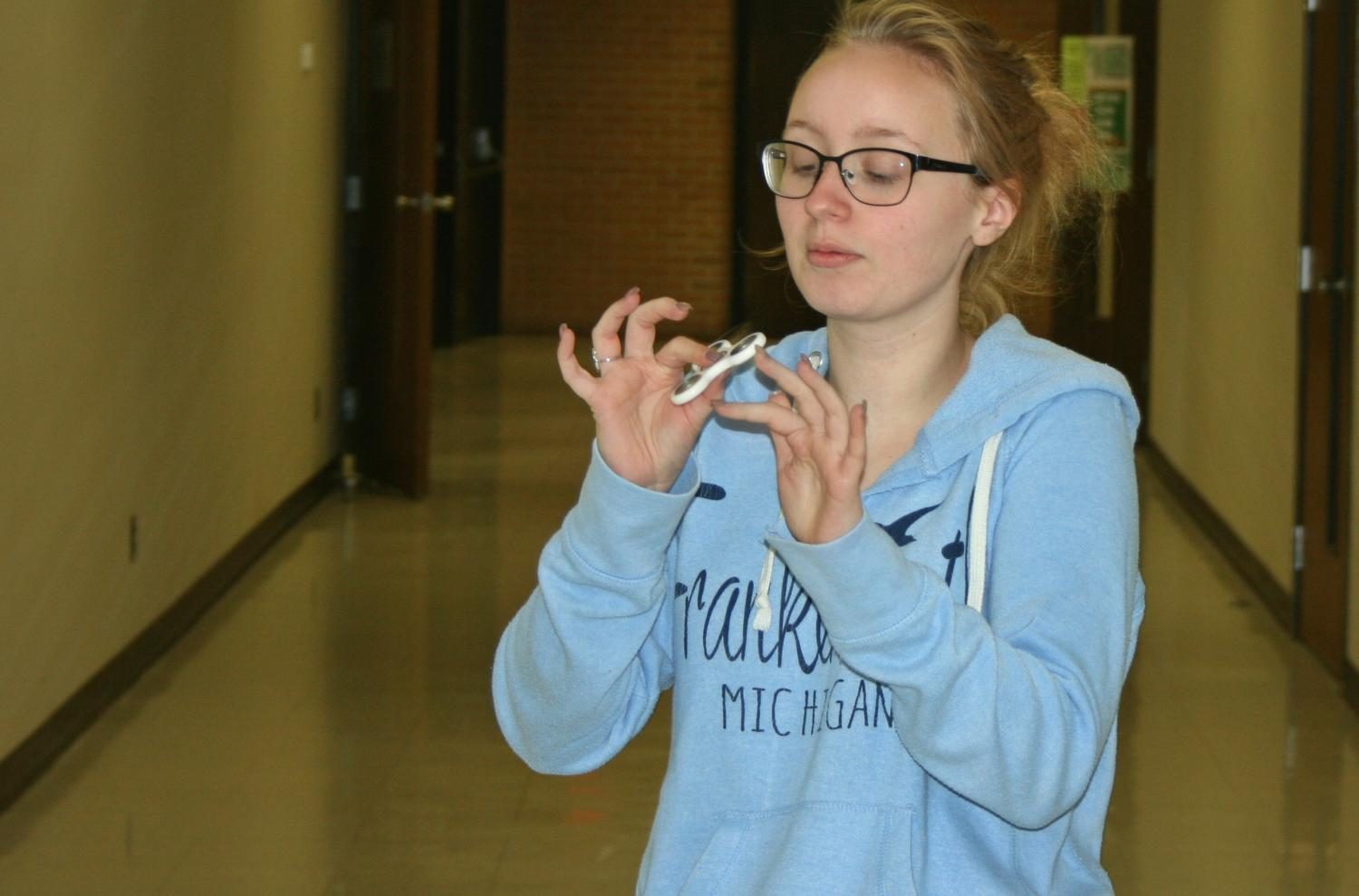Fidget spinners serve as a substitute to squirming in your seat
IMAGE / Connor Earegood
Sophomore Lindsey Bouchard plays with a fidget spinner during lunch.
Fidget spinners and cubes have gained popularity as a treatment for fidgeting and restlessness.
The devices have gained popularity in the classroom. Some people believe that they help students with ADHD and ADD to focus better, but there is no medical evidence that supports this claim.
Many see the devices as a great alternative to foot tapping, which can be loud and annoying, especially if you have a squeaky chair.
Fidget spinners have trended recently, and they may offer an alternative to foot tapping for some students.
Freshman Gabe Mosher uses fidget spinners to help himself concentrate.
“It’s so I don’t bounce my leg,” Mosher said. “It helps me focus on my work in class.”
Fidget spinners can be found online for cheap prices around $1, but quality spinners will cost more money reaching over $10.
The device is basically a plastic piece with bearings attached to it.
For sophomore Lindsey Bouchard, the person using the spinner disrupts other students in the class.
“You can hear them spinning, and it draws your attention away from your work to the spinner,” Bouchard said.
Sophomore Lance Hawkins thinks spinners can be useful, but he also thinks they can be annoying.
“I think they can be good,” Hawkins said, “but sometimes it can be a really big distraction, especially for other students in the class.”
Freshman Ashton Asaro-Nolan bought a spinner recently.
“I got one because they’re trendy,” Nolan said.

Class: Senior
Hobbies: I participate in quiz bowl, chess, robotics, Future Problem Solving, and many other "nerd sports."
Future Plans: I plan to...





